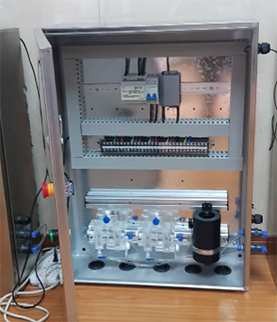Brief Introduction of the Products
Micro Water Quality Monitoring Station

The existing water quality monitoring station has issues on size, cost, not real time, and 2nd pollution concern. By using IoT technology, Acer develops micro water quality monitoring station which can be installed everywhere and can report the water quality value by scheduled time.
Another strength of this micro water quality monitoring station is it easy on maintenance. With water pump, flow cell and auto clean design, the maintenance becomes easier and sensors life time can be prolonged which benefits on the total cost.
Another strength of this micro water quality monitoring station is it easy on maintenance. With water pump, flow cell and auto clean design, the maintenance becomes easier and sensors life time can be prolonged which benefits on the total cost.
Smart Meter

Acer Being Communication realizes the biggest challenge for governments hoping to phase in smart water meters is the budget. In addition to purchasing new meters, there are installation and operating costs. To solve this problem, Acer Being Communication proposes upgrading existing meters to smart meters via the “Add-on” concept. “Add-on” means adding a device to water meters directly, capturing the reading, carrying out local OCR (Optical Character Recognition), and then sending the results to the cloud or backend system. In this way, governments don’t need to purchase new meters, or pay to install them.
Water Harvesting + IoT

Water harvesting involves the use of water accumulation bricks that store water underground. They can be found under parking lots, sidewalks, playgrounds, and parks.
Existing water harvesting solutions just store water and use pumps to supply it when needed. However, there are currently no mechanisms for monitoring water conditions inside accumulation brick facilities.
With IoT, information concerning water levels, flow speed, and quality is available. What’s more, gate control of water flow can be implemented. By combining IoT-based harvesting systems with weather information, rainfall data, and information about river/lake water levels and flow speeds, a smart flood monitoring system is created.
Existing water harvesting solutions just store water and use pumps to supply it when needed. However, there are currently no mechanisms for monitoring water conditions inside accumulation brick facilities.
With IoT, information concerning water levels, flow speed, and quality is available. What’s more, gate control of water flow can be implemented. By combining IoT-based harvesting systems with weather information, rainfall data, and information about river/lake water levels and flow speeds, a smart flood monitoring system is created.



